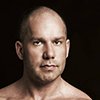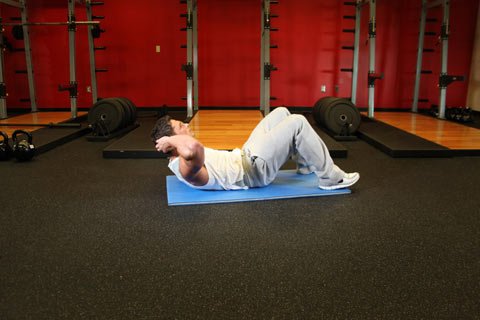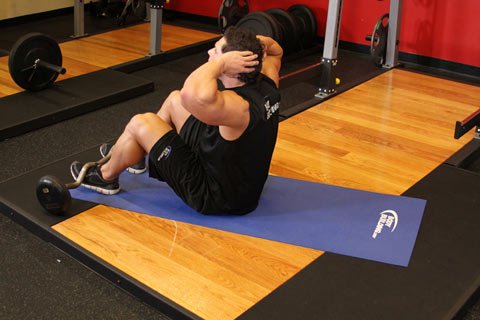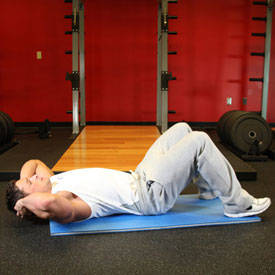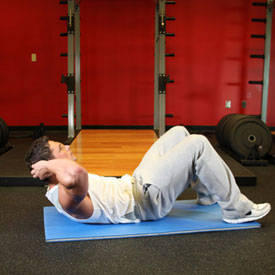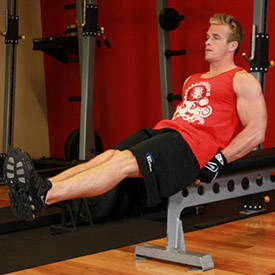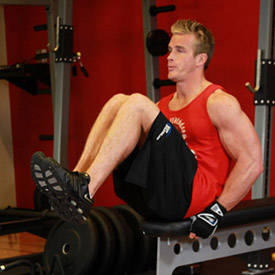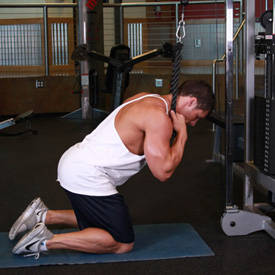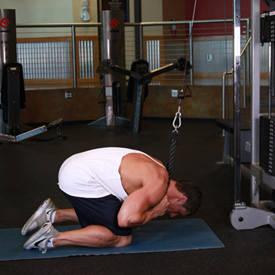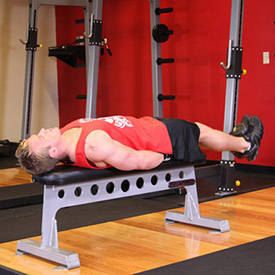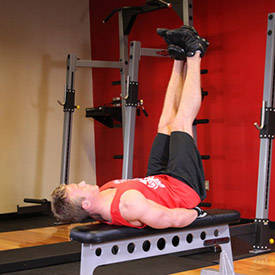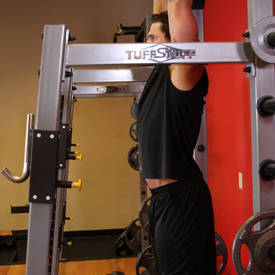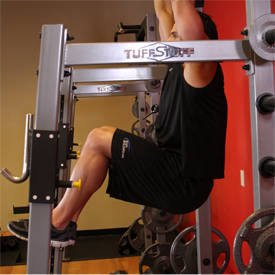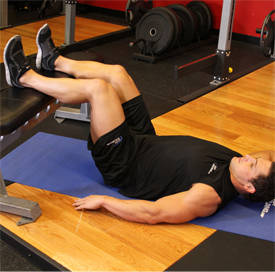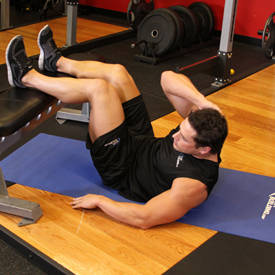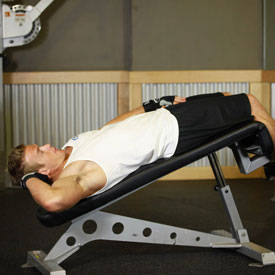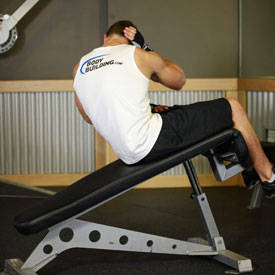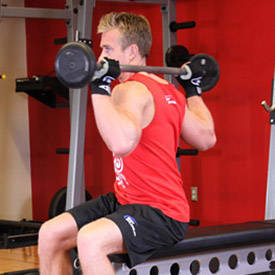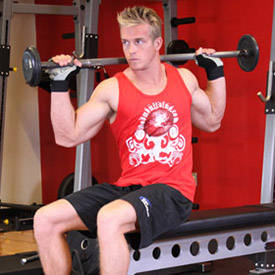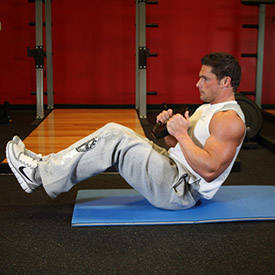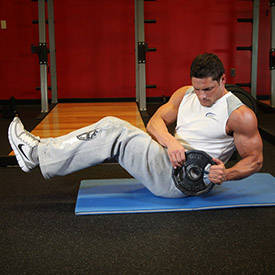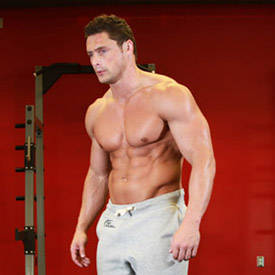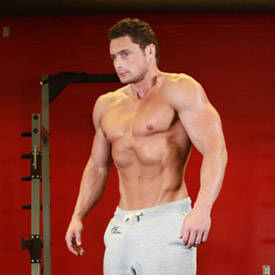Article Summary:
|
So you've managed to build a respectable X-frame. Now what? Well, why do you have an X-frame? To focus visual attention. And since attention is eventually always drawn to the center, that means you are putting your midsection on display: abs, obliques and serratus.
Nothing looks better than abdominals like jewels. They are the crown to any physique and show to the world that you are man enough to cut down to the bone in order to show your musculature. Moreover, many women do not like the look of a huge bodybuilder, but invariably they melt for a razor-sharp six-pack.
Abs ranked atop the list of sexiest body part on men, and butts came in a distant second. So what self-respecting man doesn't want washboard abdominals?
People always look at me funny when I say they can do all the ab work they want, they will never see their stomach appear, hard as a rock. They can have abs bigger and better than mine, but what good is it if you don't see them.
The battle for the greatest midsection is fought on many fronts, and that makes it perhaps the most difficult muscle to obtain for most bodybuilders.

Status And The Diet 
The abdominal area did not become a focus in this sport until the mid to late seventies, when people began appreciating the bodybuilders that took the time to lose body-fat for a competition. If you look at the 40's, you see a complete body like Vince Gironda's, but he could never grab a title from the husky and bulky John Grimek, who was the hero of the day.
Towards the seventies that changed and the more ripped bodybuilder gets more attention. The one thing that really stands out on a bodybuilder that diets down as opposed to a big hulky body, is that they have clearly defined abs. And so the midsection became a focal point.
Perhaps that will help you to understand that most of the work you put in when training for abs happens in the kitchen. Until you diet down you cannot see your abs. Fat is stored most prominently in that area and always hides you midsection. It's the last of the flab to disappear on a diet, which is why it has become the status symbol of the modern bodybuilder.
You can have the greatest abs in the world, it takes a lot of will-power and a killer diet to bring out their qualities. And that is what people don't understand. They think their waist is too big and that doing hundreds of crunches will rid you of all that flab. Wrong!
It will help a bit, since more muscle burns more calories, but you'll never lose weight until you start by consuming less than 10 calories per pound of body weight. That is your maintenance line. Above that you will maintain or gain body weight, below that you will lose body weight. Most of the reduction of calories should be from carbohydrates since they are stored most easily as body fat.
As you burn less carbs you start burning fat and protein. The trick is to burn more fat than protein so you don't lose muscle. But beware, the minute you start on a diet, it will be hard to gain muscle mass.
Early on you can use body fat as energy, but after that gains come to a grinding halt, and obviously training does have something to do with great abs, so you need to lay the foundation while you are still on a bulking diet, and that's what this article will discuss.

Weighted Vs Non-Weighted
The great debate about how to train for jewel-like abdominals has been centered around the issue of whether or not to use weights when you do the exercises. One person does two-hundred reps with no extra weight, another does 20 reps with a plate behind his head. They both have good abs, so which is it? Well, it's not really an issue. The point is the perceived intensity.
If you cringe at the thought of doing two-hundred reps and having to focus on that contraction every time, don't do that. Your intensity will falter after 40 reps and everything after that will have very little effect.
It also takes the fun out of training. On the other hand, if weight is not your cup of tea, by all means rep out. The thing is the abs are a stabilizing muscle that get lots of action during the day, so you train them aerobically, that means at least 20 reps.
If that is fulfilled whatever you do will have some effect. The best way to go, if you are really set on growing a great midsection, is to combine both. Since some exercises don't lend themselves very well to adding weight, you may want to use other exercises with weight and keep these as they are.
One of the problems proponents of the high-rep theory have is that they think that using weight will make their waist big. This can be true when training the obliques but not the abs. They don't grow that far, they grow more up-down than they do out. Because of the nature of the work they do they don't have to grow that much either. So this is an absolute myth.
You may add half an inch to your actual waist size over a few years, but by then your shoulders should have more than made up for it. On the other hand losing intensity when doing high reps has no use whatsoever. It's something you have to learn to like before it pays off.
What does make your waist big is doing sit-ups or leg raises off the floor. These two exercises will not hit the abdominals because the bend you perform in on the hip. That area is mostly bone and disallows the muscle in between to be worked. What is worked is the muscle on the hips: the lower attachments of the obliques.
When you start growing these, on top of the immovable bone, you create an extension of the dry mass that makes the area of the waist around the hips bigger than it should be.

When To Work The Abs 
Just like the calves, the abs thrive on a lot of work. Giving them just bite-size sets here and there will do very little, you will barely tickle the muscle. So you need to hit them several times a week.
The common recommendation is that you train them 3 to 4 times a week. And when you do work them, work them after your workout. Vince Gironda warned us about this years ago, and it still goes. You get better results training abs after the other muscles.
Vince thought it had something to do with the shock to the solar plexus and less hormones, but in effect it was simply that ab-training, if done properly, takes a lot out of you and your intensity falters after that. You should always keep the longer sets for last. I can vouch for this.
Another thing that I do, but haven't seen anyone else try is the following. I hate to train abs, so 8 months of the year I don't train them at all. When I do, it is four months out of my next contest and I start doing them every day, even on days I don't train anything else. Usually in the morning when I wake up.
So, if you have nothing to lose, give it a whirl and tell me if I should advise this to other people. For me it has worked wonders, I have maintained a slim and trim 29 inch waist that looks really ripped this way.
You don't necessarily have to train abs at the gym. By keeping them several hours removed, I can train abs with full intensity and be in the right state of mind again by the time I have to work my next muscle. At home you can't add a lot of weight, so you have to be in the right mind-frame to do the high-rep exercises.
Because of this you get sort of an aerobic workout to that counts as cardio. The high reps work thermogenically, fat comes loose off the body and hopefully off the midsection, and can be used immediately as recuperative fuel for the muscle that was worked.
There is no scientific back-up to support this, there is no such thing as spot-reduction, but that is how I experience it. Worth a try perhaps?

The All-Around Picture 
The hard thing about training the midsection is the complexity. There are so many areas to it. The abdominal area has three different sections, so you know you'll have to hit those from the lower and higher end at least, and perhaps target the middle as well if it is lagging behind.
Then the obliques are a personal choice. If you have a wide waist, I suggest you don't train them. If you have a really narrow waist, try to make a conscious decision to see if the obliques will add to your look or not.
Personally I don't train them because my hip-bone takes that visual function. And although they aren't really part of the midsection, I also include the serratus below the pectorals and the intercostals, between the chest and back.
They complete your definition and are best hit with typical midsection exercises. So even though you don't need to use an endless amount of exercises, per workout you'll need to change a few things to make sure you get complete development. The midsection makes up the largest part of the upper body if you count the lats and lower back as a separate muscle.
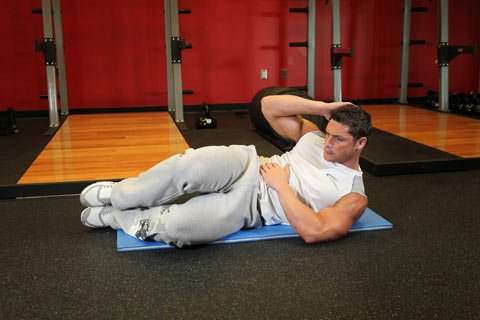
 Click To Enlarge.
Click To Enlarge. If You Have A Narrow Waist, Make A Conscious Decision
To See If The Obliques Will Add To Your Look Or Not.

Physiology Of The Muscle 
Starting from the inside out, we have the rectus abdominis, divided in many muscles. The largest area of the midsection that runs from the groin all the way up to the lower pec insertion and take up approximately just under half the space of the pectorals in width. The division of the muscles in the rectus abdominis gives it the washboard look everyone craves, but for that obviously those divisions cannot be filled to the brim and beyond with body fat.
Since they are different muscles, they'll have to be trained as such. Most find that training them as upper and lower abs is enough, but a few people need to invest extra time training the middle abs. The function of the abdominals is to hold the body as you bend forward, shortening the distance between your ribcage and groin. And therefore will be trained as such.
Next the rectus abdominis are the internal and external obliques, that steady the body in turning motions and provide force for bending and stretching when in such a twisted position. They can add the finishing touch to the midsection or form a large mass on top of the hip and ruin your entire waist line. This is usually a genetic factor.
On top of the obliques, to the side of the chest we have the intercostals. A series of small cable like muscles running down like ladder from the upper pec insertion to the height of the lower lat insertion alongside the abs.
Along with the serratus anterior, a similar but larger muscle that is situated between the intercostals and the lats, they are activated as the body goes into an extreme stretch and help keep the ribcage near the abs.
To train them we usually do motions that go from an extreme extension to a crunched up position. So you see the area of the muscle group is rather large. And not an easy one to train I might add.

Training The Muscles 
With the thousands of exercises out there in which ways you could train your midsection, I'm obviously not going to list everyone or be as thorough in my approach as I was on other body part, but I'll attempt to list some of the more popular ways in detail and at least graze the surface of the majority of these exercises.

The Upper Abs:
The upper abs are the first focus, these are most easily rid of fat and will be on display most of the time. Consequently they also have more fast-twitch fiber than the lower abs and respond to training a lot better. The main player in this game is the crunch.
You lay flat on your back, body secure, hands in front of your chest or behind you head and instead of moving the entire upper body you will contract only the abs. Your lower back stays flat on the floor as you upper back leaves it and your head comes closer to your knees. You notice that the abs are becoming smaller, signifying a contraction.
Use a controlled motion, don't deliberately do speedy reps. Hold the contraction for a count. Great ways to involve more of the middle abs and even lower abs include doing them on a medicine ball which give greater ROM, better stretch and better contraction.
You can also elevate yourself by putting your feet on the floor and keeping your butt off the ground while still keeping part of the lower back on the ground. Supporting the lower body on a bench or laying secure on a decline bench will do the trick as well.

The Middle Abs:
To train the middle abs often means finding something that stimulates both upper and lower abs to some extent. I find two exercises particularly effective in shaping a full symmetrical six-pack. The first is the scissor crunch.
This particular variation has you sitting in the edge of a bench or table or whatever and supporting yourself by holding your hands underneath the bench. Your legs are hanging off and your body is virtually upright.
Only your butt is touching the bench. Pull your knees up to your chest. This is the starting position. Now lower and stretch the legs and at the same time lower your upper body until it is half an inch from the bench and your legs are straight.
This makes your body almost a straight plank. Now return, crunching the abs hard as you contract from the bottom and the top at the same time. Hold for a second and then repeat.
This is an exercise that can't be done weighted, but should not be disregarded. Personally I think it's one of the greatest and the people whom I have recommended it to have agreed here. But the one I love doing most of all is the rope crunch.
Attach a rope to a high pulley and sit yourself down on your knees beneath it about a body's length from the weight stack.
Hold the rope in both hands, arms outstretched, body outstretched, back arcing backwards. As you move your upper body toward the floor you will also be moving your back out of the arc and into an arch the other way so you fully and completely contract the abs.
At the same time your arms are coming down with the rope until your hands are by your head to increase the weight in point of contraction.
This can be tiring on the arms and a very frustrating exercise as I've seen that some people apparently never learn proper form on this exercise and give it up all together. Their loss, because if you can do it correctly, you'll never feel a pump like that in your abs again.

The Lower Abs:
The lower abs are always a concern. I don't see why unless you compete because you can hardly ever see them unless you are at a ridiculously low body fat percentage.
However, this is a program for everyone and anyone who has tried to step onstage without lower abs knows it's a disaster. So here goes. The best ways to hit the lower abs are in variations of the leg raise.
The leg raise in its principle form is often badly executed and gives the same problem as the sit-up. So lets review some variations like the hanging leg raise. This particular variation has you supported on your elbows or from a bar (use straps if that is too hard) and dangling down. The trick here is to keep the upper back perfectly still as you try to get your pelvic bone closer to your chest while you tuck in your knees.
This is not like many beginners think, and exercise that hinges on getting your legs up. Do not swing as you go back down. Lower in a controlled fashion until legs are perpendicular to the floor again and no further.
Doing the exercise with straight legs provides extra resistance because the lower abs will have to stabilize the increased weight instead of the quads. This last form increases the danger of just lifting the legs though, so stay focused on contracting the abs.
That is the best tip I can give you. The other variation I particularly like overcomes the leg problem. This is more of a hip lift than a leg raise. Lay flat on your back, extend your legs straight in the air, perpendicular to the floor.
Keep them like this through the entire range of motion. Now just lift your hips up as you keep your upper back steady on the floor. Use your arms to keep your balance, but don't help.
Just lift the hips off the floor and return. This is an exercise I used for a long time to overcome lagging lower abs and has helped me a great deal. Ever since I've been teaching it with great success. So give it a shot if you need more lower abs.

The Obliques:
The obliques are perhaps the easiest to train but most often ignored. I already explained that I consciously ignore them, but some just need to have oblique definition or they don't look complete on stage. So here are the key ways to involving the obliques, especially upper obliques (the lower ones make the hips wider). I can sum it up in one word. Twisting.
The best exercises for oblique definition are twisting crunches, twisting decline crunches, broomstick twists and twisting plates (though the latter two when done repetitively do not have a favorable impact on your spinal column). I'm fairly sure these names are self-explanatory and that you comprehend the term "twisting", so I won't expand on that much more.
The serratus and intercostals work synergistically and are best trained in an extreme point of upper abdominal contraction with the upper back moving forward in regard to the lower back.
As for specific ab exercises that target the serratus, you need only look at strict rope crunches or twisting crunches to involve plenty of them. They aren't easy to train and will only show after diligent work and severe fat loss, but when they come out they are the most complete thing you've ever seen on your body.
One other way of training them, but not immediately the safest in my opinion is reverse armpit rows. If you have gravity boots, suspend yourself upside down, grab two dumbbells and row them to your shoulders/armpits.

Additional Exercises:
Here is a list of other exercises I won't expand upon right now, but may tickle your fancy in a quest for a little variation.
- Decline Crunches
- Hanging Leg Raises
- Decline Reverse Crunch
- Lying Leg Raises
- Seated Leg Tucks
- Air Bike
- Toe Touchers
- Machine Crunches
- Side Bends
- Scissors Kick
And last but not least I wanted to discuss the vacuum. This technique is an age-old form of isometric exercise that is believed to reduce the waist line. I don't believe that for a second, but you'll find after practicing this regularly that your abs get more definition when you hit and ab pose.
Simply retract your abdominal wall as far back as possible while breathing out completely and then attempt to keep it that way even as you recommence breathing. Doing this for 5 minutes is hard and demands extreme focus, but it's a technique well worth learning.
Arnold said in his book "The New Encyclopedia of Modern Bodybuilding" that it is easier to practice them while on all fours at first. I've been doing them standing because it's more practical and efficient, from the beginning, but if you find this too hard, it may be a solution.

Perfecting The Muscle 
The greatest weakness the midsection can have is lack of definition, normally due to improper dieting and too great a water retention in the area. Immediately you look like you came unprepared.
Even for amateurs and recreational bodybuilders this is a disaster. Like I said, the abs are the visual center of the body, and you just don't look good as long as you can't see them. Impressive perhaps, but not aesthetic.
If this is the case, diet a bit longer, diet a bit harder and above all, make sure your diet is up to par. Lack of lower abs is common among beginners as well. No one likes to do leg raises and hanging leg raises, so oftentimes the problem lies in lack of effort. Target the lower abs and try to prioritize them so you have all your concentration and intensity. Upper ab weaknesses are rare.
|
|
|
|
|
I don't see them being dwarfed by the lower abs, and the chest only looks more impressive. Nonetheless if you have too badly developed upper abs, it's time to start doing more crunches more often.
If you've been training them weighted, try non-weighted and vice versa. A lack of obliques may take a bit off the finish, but it's always better to not have them and a great X-frame than to ruin your X-frame by having large obliques.
If you opt to train the obliques, try twisting motions and crunches to the side. The serratus and intercostals are very advanced muscles. It takes a lot of dieting and specific training to bring them out fully, so don't despair if you don't see them early on.
Most people take years to properly develop them, so you aren't behind on the pack. But if you want to target them stretch hard on the rope crunch before coming down in a contraction and hold it for a moment.
It's hard not to have a weakness in such a large area, so don't sweat it too much. Just come in totally ripped and try not to put your weaknesses on display. Do what you can and see what happens.

Progression Of Training 
This is one of those muscles that doesn't change much over the years. Chances are if you get great abs early on, you have them for life. They pack on fat easily, so they are the last muscle to go on a diet, and training them harder or longer will add very little.
What's important is that you keep training them from time to time to keep them sharp and cut. No need to add more sets unless you feel that improves the workout no need to get more intense if it doesn't add to the goal. Be functional about it.
The best thing to do is to stick with what works and as you near a contest, increase the number of sessions you do. The aerobic effect is a plus and you get some wonderful definition in the area that looks nice onstage.
